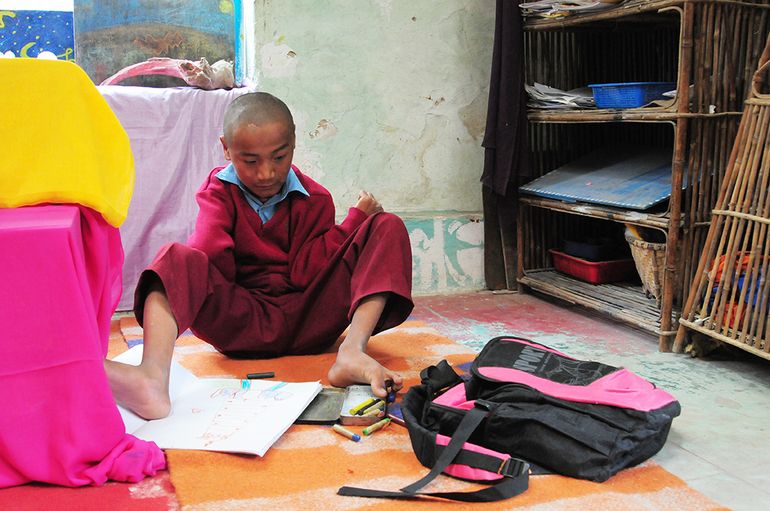TEACHING CHILDREN TO ASK QUESTIONS
In light of the fact that over half of the Nepali are illiterate, it was clear for Shanti from the beginning to found a school for children based on the Waldorf teaching method. Children shouldn't be drilled with rote memorisation, which is typical for Nepalese public schools, but should be allowed to develop their creativity in the artistic subjects.
For this reason, lesson plans feature artistic activities like drawing, painting, working with sound, music, singing and dancing as well as sports, crafts and artisanry. A dedicated dance instructor teaches the children traditional Nepalese folk dances. Preserving the country's culture and passing it on to the children is very important to Shanti.
In particular, they should be raised to think for themselves. One of the most important questions in this regard is “Why?”. To inquire, to question something, to express doubt – these are driving forces in shaping a democracy. At Shanti, children are encouraged to ask questions so that they learn to understand the meaning of life around them. Without asking why, development and thus progress are impossible.
Since Shanti learned that children in public schools are trained not to ask this question, the instructors place even more emphasis on encouraging the children to question.
More than 100 children currently attend the all-day school in Kathmandu, where they are taught by ten teachers, who regularly participate in continuing education courses in Waldorf pedagogy. Beginning in the first form, children are taught in Nepali as well as in English.
The school currently teaches forms 1 through 7. However, Shanti is working to receive consent from the authorities to teach up to 8th form and be able to prepare students for general school leaving certificates. Until then, children must attend the state schools after 7th form.
HANDICAPPED OR NOT – EVERYONE LEARNS TOGETHER
All of the classes at the Shanti school are integrated. Both handicapped and non-handicapped children learn together. Visitors are repeatedly astounded by the numerous possibilities of how handicapped children can solve difficult tasks themselves.
For example, ten-year-old Rukesh, who has only one arm, can clamp the knitting needles between his legs so skilfully that he is able to knit with the others. In this fashion, he knitted himself a scarf, which he now wears proudly.
Another example is 16-year-old Buddha. Due to brain damage during birth, he has spastic, contorted arms. With amazing dexterity, he uses his feet to keep his notes.
He is good at mathematics and can draw wonderfully. His colourful pictures are a marvel to all. In this way, he feels part of the community and is an extremely content individual.






